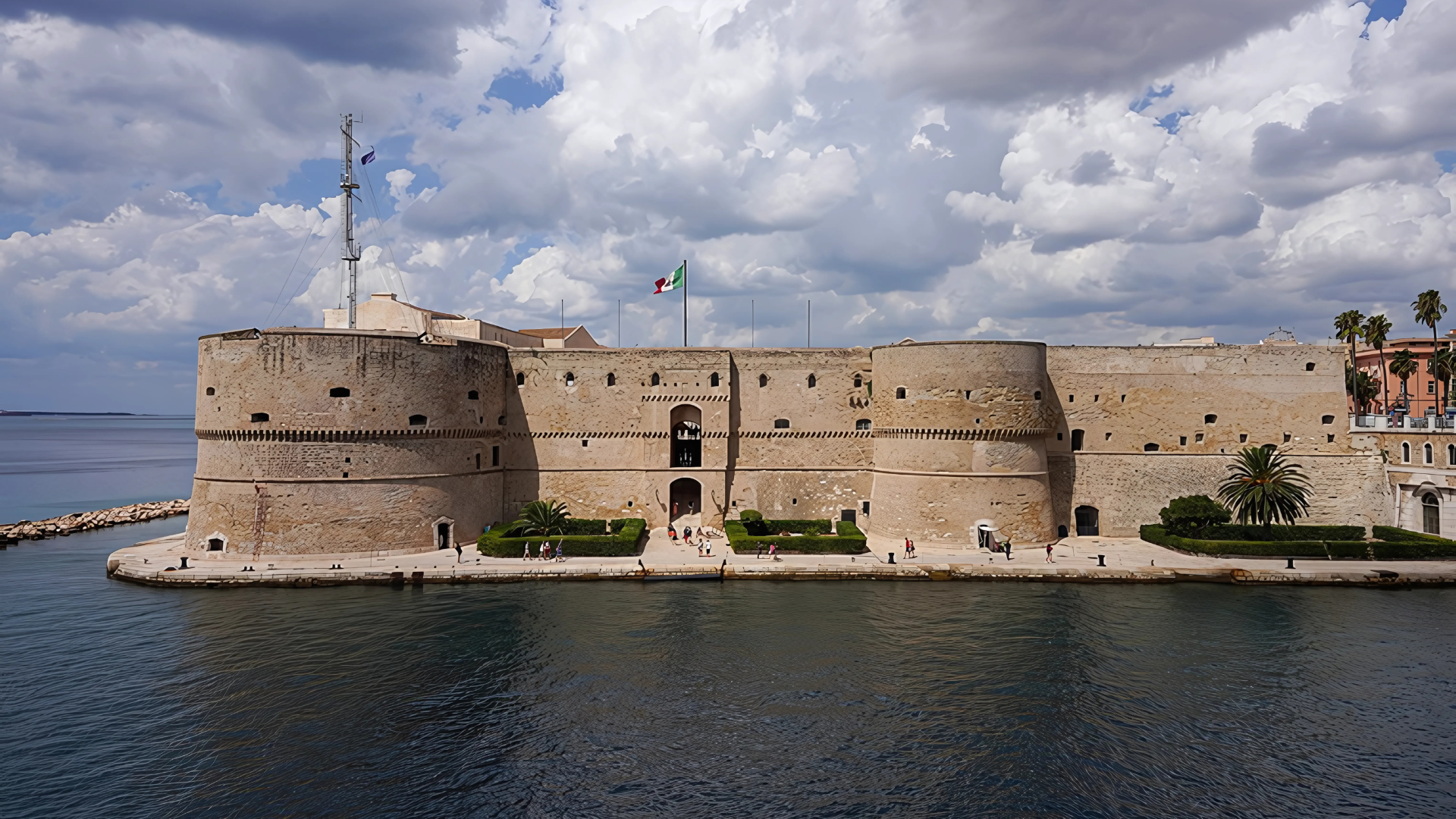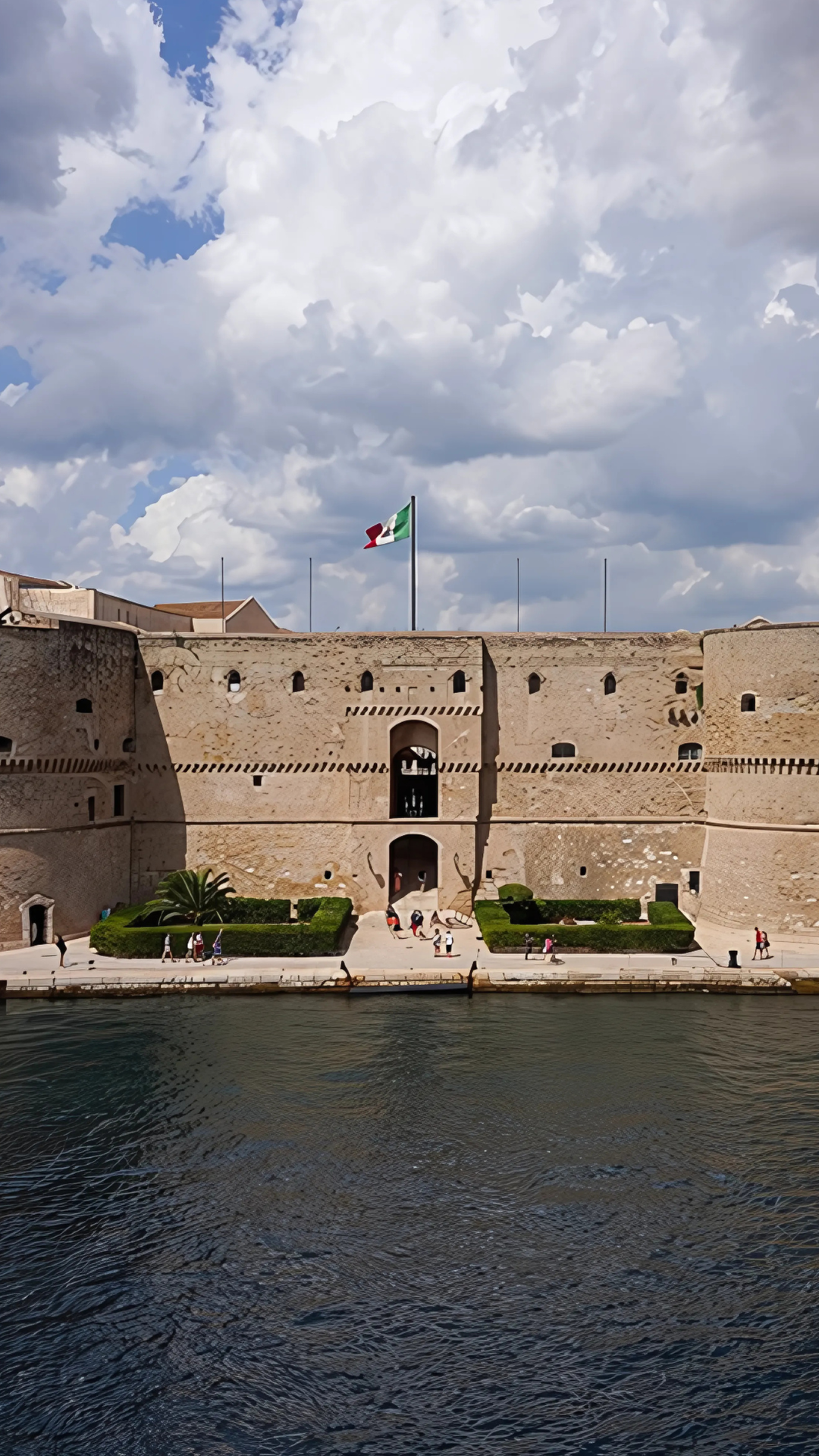Taranto
The Aragonese Castle of Taranto, also known as Castel Sant'Angelo, is located at the southern end of the island that houses the ancient village of the city. Its strategic position takes advantage of a natural depression in the rock bank, offering a privileged control point over the Mar Grande and the Mar Piccolo. The origins of the castle date back to the Byzantine period, around 780 AD, when a fortification called "Rocca" was built to defend the city from attacks by the Saracens and the Republic of Venice. Subsequently, during the Norman, Swabian and Angevin dominations, the structure underwent several modifications and expansions, taking on the typical characteristics of medieval castles, with tall and thin towers. In the 15th century, with the advent of firearms, medieval fortifications became obsolete. For this reason, between 1487 and 1492, the king of Naples Ferdinand I of Aragon commissioned a complete reconstruction of the castle. The project, attributed to the Sienese architect Francesco di Giorgio Martini, envisaged a lower and more massive structure, with circular towers suitable for resisting artillery fire.



